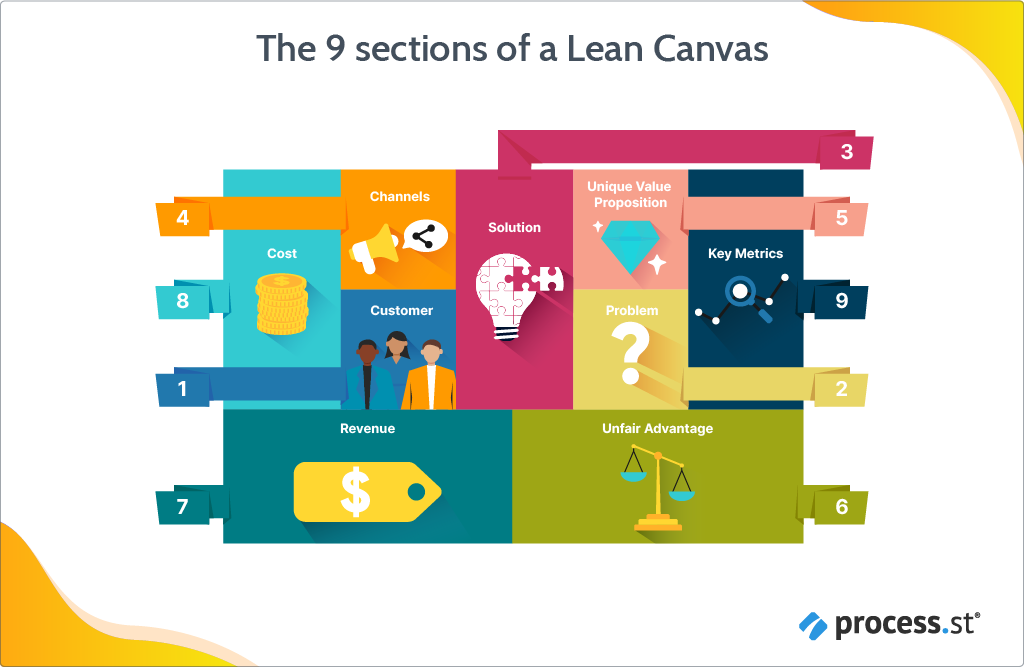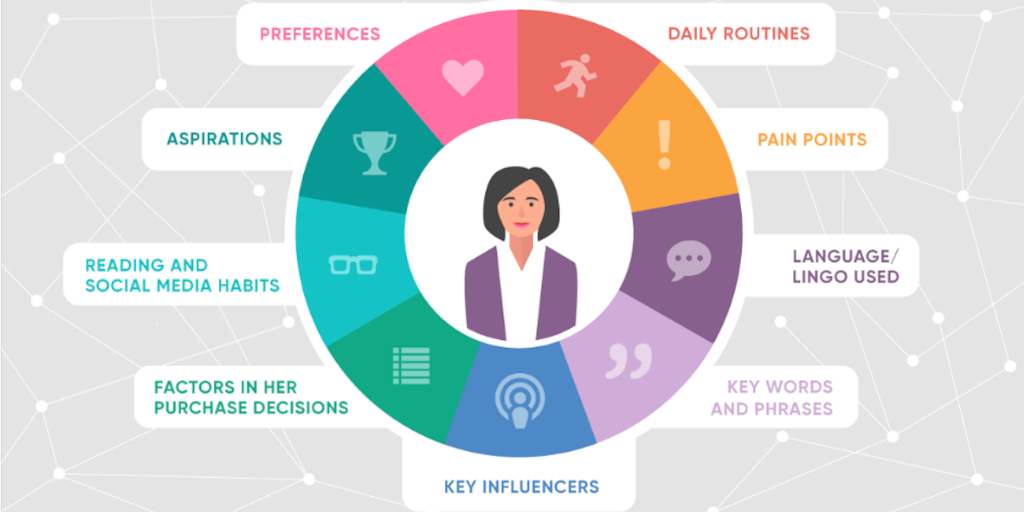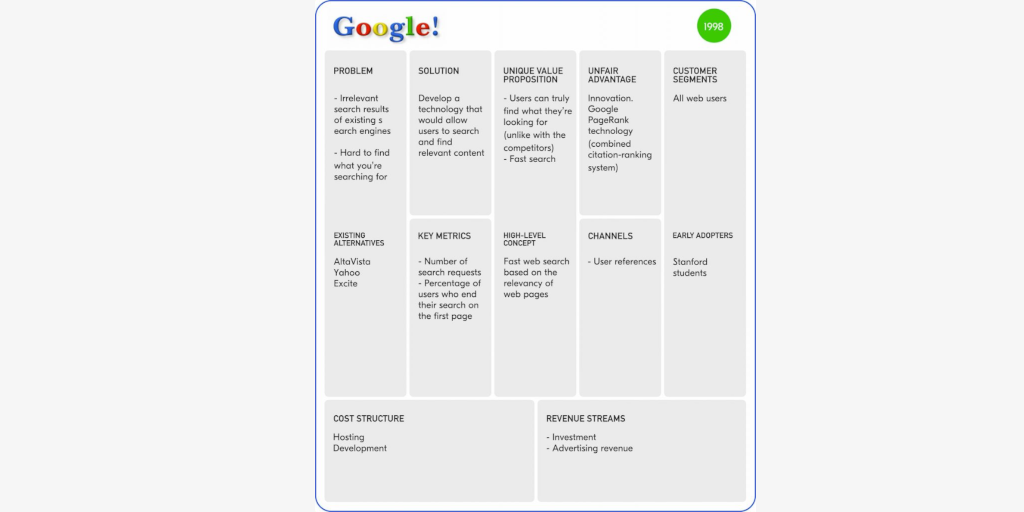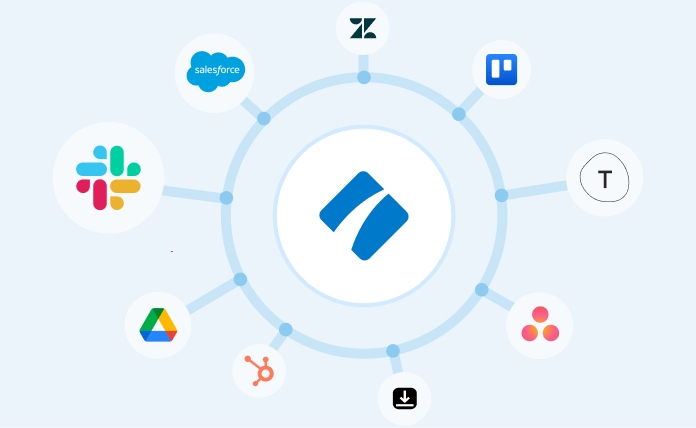
![]()
Everybody has a plan until they get punched in the mouth…
– Mike Tyson
Which, let’s face it, happens to most start-ups and entrepreneurs. Around 75% in fact.
You have the best idea. You spend days, weeks, and months perfecting a 40-page business plan filled with five-year forecasts, 18-month roadmaps, and in-depth marketing strategies. You confidently pitch it to stakeholders and investors.
And then?
Then you get punched in the mouth.
Potential investors go quiet or “haven’t had time to read it” and you’re left with an expensive, wasted deliverable and a chunk of time that you’ll never get back. Worse still, your product isn’t any nearer launching and you haven’t secured any buy-in or investment.
What. A. Waste. Of. Time.
Traditional business plans are of little use to start-ups, and of no real interest to investors.
But what’s the alternative?
A one-page business plan inspired by Eric Ries’s Lean Start-Up methodology and specifically designed for emerging entrepreneurs: The Lean Canvas.
The Lean Canvas is a living framework that allows you to quickly capture your idea or concept, thoroughly validate it, and then continuously share, improve, and most importantly move on it.
Ok, I know what you’re thinking:
- How can a one-page Lean Canvas possibly replace a 40-page business plan?
- How can I tell the entire story of my business on one-page?
- Is a Lean Canvas really enough to help me secure investment or buy-in?
I have the answers to all these questions and more in this Process Street post.
How can a one-page Lean Canvas possibly replace a 40-page business plan?
Creating a detailed business plan (complete with comprehensive forecasts, roadmaps, and strategies) and pitching it to investors has always been the first step new businesses and entrepreneurs take to secure buy-in or investment, right?
But why?
Why business plans don’t work for start-ups

During the early stages of an idea or a business, all you really have is a strong belief, a clear vision, and a lot of untested assumptions: You believe there’s a market for it. You think your pricing will generate $X in revenue, and you hope your product roadmap will look a certain way.
But you don’t really know. How can you? You haven’t tested the concept.
Of course, your business model might be based on similar businesses, products, or concepts, which allow you to hypothesize the future. But you can’t provide any concrete proof or evidence that your idea is going to work.
Which is surely the sole purpose of a business plan?
Plus, a business plan typically takes ages to write as it requires lots of detailed, accurate information. And, it becomes obsolete incredibly quickly, as and when you encounter the various operational and marketing challenges that inevitably arise.
So, instead of being a clear, factually accurate, representative proposition, a start-up’s business plan tends to be a wishy-washy, out-of-date, speculative document.
And, what do investors, Angels, and stakeholders hate more than anything…? Exactly.
The alternative to speculative, inaccurate, & obsolete business plans
Start-ups face a vicious circle: You can’t prove your concept without investment, but you can’t get investment without proof.
The original concept of a business plan was to break this circle and give investors the information they needed to justify a decision on whether to fund the idea or not.
But as we’ve already established, not only is a start-up’s business plan incredibly time-consuming to create, it’s difficult to digest and full of guesses rather than reassuring facts. As a result, all that hard work can often get bypassed by investors.
The answer to this dilemma is the Lean Canvas. The Lean Canvas is an actionable, entrepreneur-focused, one-page business plan.
Inspired by Alex Osterwalder’s Business Model Canvas and the principles behind the Lean Start-Up movement and eradication of waste, Ash Maurya developed the Lean Canvas framework specifically for start-ups.
He felt that spending time creating a business plan that was often inaccurate, obsolete, and ignored was unproductive and a wasteful.
“Waste is any human activity which absorbs resources but creates no value.” – James Womack, Leanstack, Bootstrapping + Lean Startup = Low-burn Startup
So, he developed the Lean Canvas; a one-page, easy-to-digest document that:
- Captures key investor-focused information that’s backed-up with proof;
- Start-ups can complete quickly and iterate continuously.

As you can see, the Lean Canvas is a set of nine blocks:
- Customers
- Problem
- Solution
- Channels
- Value proposition
- Unfair advantage
- Revenue
- Costs
- Key metrics
Each block presents clear, concise, and accurate information in a digestible format. It takes less time to complete, it’s easy to keep up-to-date, it gives investors the information they need, and it paints a clear picture of the business or idea on one page (instead of 40).
How can I tell the entire story of my business on one-page?
OK, you get it: It’s a waste of time creating a semi-fictional business plan that won’t get read. But, seriously? How can you convey how fantastic your idea is on one, single page?
To answer this, we’ll need to look at each of the nine components that make up the one-page Lean Canvas framework.
Lean Canvas component #1: Customers
The first block to fill out is all about your customers. As you might do with a business plan, you need to determine who your user base is and understand what makes them tick.

Go deep and build up a customer profile for each group of customers you’re targeting. Get under their skin and get to know them as people:
- Who is your intended audience?
- What type of person are they?
- What are their likes, dislikes, and pain points?
- What’s their average day like?
- What makes them happy?
- What frustrates them?
One thing you must do during this exercise is define who the early adopters of your product are likely to be.
Identifying this group of people is essential because you can use them to validate your ideas.
Ask them questions, send them feedback surveys, and get them to trial your product. Collect these valuable insights and use them to iterate your Lean Canvas, determine the direction you take your product in, and justify your ideas.
Real customer opinions and feedback are valuable proof points that investors will trust.
Lean Canvas component #2: Problem
The next step you need to take should be in the shoes of your customer. Walk a mile in your customer’s shoes so you can identify the problems they might face with (and also without) your product.
Conduct interviews, carry out tests, or send out surveys to help you uncover the real issues they’re likely to face or are already facing.
Interact with your product yourself, or ask an unrelated third party to give it a try. Consider the experience from your customer’s point of view and objectively identify what works and what doesn’t.
Take this back to your Lean Canvas and tweak your idea accordingly. Use it as evidence to prove the concept you’re pitching.
Lean Canvas component #3: Solution ❗
Next, you need to describe what your product is going to do. What will it solve? What’s the ultimate vision?
You might feel that your product solves several problems and is the answer to everything. But, remember, this needs to be clear and concise.
So, play around with each solution to see what sticks. Assess your features and capabilities, carry out research, collect feedback, and brainstorm with your team so you can narrow it down to one or two solid solutions that are grounded in evidence.
Lean Canvas component #4: Channels
How will your customers find your product? How will they come into contact with you or your product?
List every single channel or touchpoint that you could use to get your product in front of your audience.

You might want to use a mixture of paid channels, like Facebook ads or trade fairs, and free channels like SEO or blog posts. Create a content strategy to help you decide where best to center your efforts and show investors that you’re able to provide the best experience to your customers at every step of their journey.
Lean Canvas component #5: Value proposition ⚡
Write out a punchy statement that explains the core value of your product.
Think: Why would your target customer care about it? What will it do for them? What problem does it solve? Why is it a better option than the competition?
Sell the end-benefit not the solution, and keep it short, catchy, and powerfully persuasive (eg. the film ‘Alien’ isn’t a film about aliens, it’s “Jaws in Space”).

Three words of warning though:
- Don’t confuse a value proposition with a tacky slogan. For instance, M&M’s “Melts in your mouth, not in your hand…” is a slogan, not a value proposition.
- Don’t write a sentence that’s all hype and no substance. For example, “The best product EVER made” is pure hype. There’s nothing to back it up and investors will see straight through it.
- Don’t use meaningless buzzwords or jargon. You might think that phrases like “value-added interactions” make you sound like a prestigious expert, but they don’t. They make you sound like a pretentious airhead.
This block is one of the most important ones to get right. Your value proposition is how investors will see you and your product, and how they will describe you to other partners and investors.
Lean Canvas component #6: Unfair advantage
Whether you know it or not, you have an unfair advantage over your competitors. All you have to do is find out what it is!
What makes you stand out? What puts you streets ahead of your competitors? What do you have that others can’t replicate or acquire?
It might be your internal team; it might be in-depth knowledge or inside information; or it could be your unique position within a community.
It’s there somewhere. Dig it out and put it on display.
Lean Canvas component #7: Revenue
This is where you’ll need to identify the sources of income that will keep you and your business afloat.
Create a simple pricing model and test it out on your early adopters. Does it work for them and for you?
You might charge a subscription fee; you might generate income through advertising on your platform; or maybe you’ll get customers to pay for their usage. Maybe it’s a combination of all three!
Just remember to keep it as simple as possible, test it out, and keep iterating until it’s perfect.
Again, testing it out on early adopters backs up your concept.
Lean Canvas component #8: Costs
I probably don’t need to tell you that over 90% of start-ups fail because they don’t consider the proper costs of launching and running their business.
So, list all of your expenses.
Consider everything, from customer acquisition and retention costs, to distribution and office overheads. And to make sure you don’t miss any key costs, work through each of the nine blocks in your Lean Canvas and consider the costs that each might bring.
Lean Canvas component #9: Key metrics
To be able to prove the success of your product, you’ll need to set clear, easy to measure metrics.
Outline what you plan to track and why.

Identify the indicators that will demonstrate how well your company is doing. For instance, you may choose to measure the number of users, downloads, or social followers you get; or you may focus on retention figures, brand interactions, or costs, etc.
Fill in this section of your Lean Canvas with the metrics that are most critical to the problem you’re trying to solve with your product.
Now you’ve seen what goes into a Lean Canvas, can you see how it’s possible to tell the whole story of your business on one page?
Not quite?
Key things to remember when creating your Lean Canvas
The trick to creating an effective Lean Canvas that fits onto one page is to:
- Fill in all 9 blocks in the above order and work your way through each one logically.
- Fill each block with concise notes and link-out to images, documents, and other related information.
- Remember it’s a fluid, working document that’s not set in stone.
To test the Lean Canvas out before you share it with investors, go through each step and relay the story to yourself:
We will help [customers] solve [problem] by providing them with our [solution].
They will know about us through [channels] and they will be convinced to join us because [value proposition] and because we [unfair advantage].
We will charge them by [revenue] which will cover our [costs].
We will measure our performance by tracking [key metrics].
It should all flow nicely, like a story where everything is linked. If it doesn’t, it needs more work before you show it to investors.
Is a Lean Canvas really enough to help me secure investment or buy-in?
But wait a minute. Don’t investors expect to see a business plan? Will they take a one-page Lean Canvas seriously?
Why the Lean Canvas works for start-ups
The Lean Canvas is centered around validation and justification. It’s about working the idea out, asking for feedback, and using that feedback to iterate your plan until your idea becomes a valid one.
Your Lean Canvas then becomes living proof that your concept will work. Investors will value proof of concept 10X more than 40 pages of empty promises and unfounded statements.
Not only that, but it’ll take you hours, not months to put together. So, if you get punched in the mouth again, it’s no biggie. Just go back and rework it based on investor feedback.
And it’s quick and easy to update; it moves as you move, allows you to pivot, and it means that you can get your product out to market quickly. These are all reliable indicators for VCs, Angels, and investors that a start-up can take off.
“It lets you focus on building your business faster, by capturing your idea, collecting feedback, and iterating on it dynamically.” – Infolio, How to Create a Lean Canvas
To prove the Lean Canvas concept even further, let’s take a look at it in action.
The Lean Canvas in action
Below are two hypothetical Lean Canvas examples from a couple of familiar companies who, although it’s difficult to believe, were start-ups themselves once…!

In summary, Google’s Lean Canvas story (if the Lean Canvas existed back in 1998!) might have gone a little like this:
We will help all web users to find what they’re searching for easily by providing them with technology that allows them to search and find relevant content.
They will know about us through other users and they will be convinced to join us because they’ll be able to find what they’re looking for quickly (unlike with competitors) and because we have an innovative combined citation-ranking system.
We will make money through investment and advertising revenue which will cover our hosting and development costs.
We will measure our performance by tracking the number of search requests and the percentage of users who end their search on the first page.
Facebook

And, Facebook’s Lean Canvas might have gone like this back in 2004:
We will help all college students to communciate with their peers online by creating an online communication platform that will allow them to connect with their friends, share photos, and chat.
They will know about us through referrals from other students and they will be convinced to join us because it’s a student orientated communication platform and because we have invented a new type of website: A social network with social features!
We will make money through investment and advertising revenue which will cover our hosting, development, and payroll costs.
We will measure our performance by tracking the number of daily, weekly, and monthly active users.
To conclude…
Despite the obvious benefits of the Lean Canvas, it has to be said that:
“A one-page document of this kind may not satisfy every potential investor at every financing stage. But many investors will consider a document like this to be more than adequate.” – BSchools, Can a Lean Canvas Replace a Traditional Business Plan?
I think we can all agree that the moral of this story is: don’t waste months agonizing over a hefty business plan that no one is likely to read.
Instead, create a Lean Canvas. Tell the story of your business with key information that’s up-to-date and backed by research, testing, and customer proof. Get the ball rolling in one afternoon, with one page.
Think of it this way, which would you rather do:
“Spend 6 months pitching investors so you can refine a story based on an untested product? Or, spend time pitching customers so you can tell a credible story based on a tested product?” – Ash Maurya, Leanstack, Bootstrapping + Lean Startup = Low-burn Startup
I’d rather roll with the punches with a Lean Canvas. You?
If you’ve enjoyed this post, sign up to receive the weekly Process Street newsletter here.
What do you think of the Lean Canvas? Have you used it before? Let us know your thoughts in the comments below!







 Workflows
Workflows Forms
Forms Data Sets
Data Sets Pages
Pages Process AI
Process AI Automations
Automations Analytics
Analytics Apps
Apps Integrations
Integrations
 Property management
Property management
 Human resources
Human resources
 Customer management
Customer management
 Information technology
Information technology



Amanda Greenwood
Amanda is a content writer for Process Street. Her main mission in life is to write content that makes business processes fun, interesting, and easy to understand. Her background is in marketing and project management, so she has a wealth of experience to draw from, which adds a touch of reality and a whole heap of depth to the content she writes.